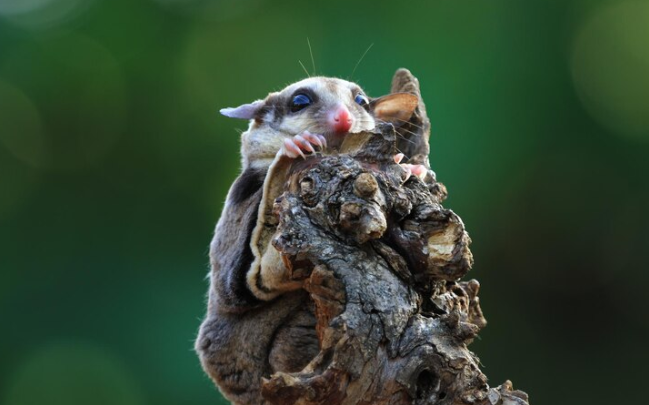Australia’s unique wildlife often shares our suburban spaces sometimes a little too closely. Possums, while cute and native to the region, have a growing habit of trading trees for rooftops. This shift in behaviour is becoming increasingly common in urban and suburban areas. Understanding why possums are drawn to roof spaces is crucial if you’re looking to protect your home and prevent long-term damage. If you’re dealing with noisy nights or mess in your ceiling, chances are you’re not alone. Many homeowners require possum removal in Melbourne as these marsupials make themselves at home. Roof cavities offer warmth, security, and shelter from predators all appealing reasons for possums to move in.
A Safe Haven from Natural Predators
In the wild, possums face various threats like large birds, snakes, and even domestic pets. Roof spaces, on the other hand, offer a virtually predator-free environment.
Possums are naturally nocturnal and vulnerable during daylight hours. A roof cavity mimics the safety of a tree hollow, but without the risk of predatory birds or competition from other animals. Once inside, they’re difficult to evict without professional help.
This perceived safety encourages possums to return night after night. And if a female finds a suitable nesting spot, she may raise her young there turning your ceiling into a nursery. When this happens, possum removal becomes not only a matter of convenience but also a necessity for property protection.
Warmth and Shelter in Every Season
Roof spaces offer something possums can’t always get in the wild consistent warmth. Especially in Melbourne’s cooler months, ceilings retain heat from household insulation and appliances.
This warmth is highly attractive for possums during winter. Tree hollows may not retain enough heat and often lack proper insulation. Your roof, however, provides a weatherproof cocoon that protects against rain, wind, and frost.
Unfortunately, this seasonal invasion is why many homeowners see a rise in possum removal cost in Melbourne during colder periods. Early signs like scratching sounds or droppings in your roof space should be addressed promptly to avoid a larger infestation.
Easy Access via Overhanging Branches
Many homeowners don’t realise how easy it is for possums to climb into roof cavities. Trees planted near the house, especially those with overhanging branches, provide a natural highway straight to your roofline.
Possums are agile climbers. They use fences, pergolas, downpipes, and even electrical wires to navigate. Once on your roof, they can slip through broken tiles, gaps in the eaves, or uncapped chimneys.
Once they discover your home is easy to access and provides warmth, they are unlikely to leave on their own. This is where possum removal professionals step in, as removing the animal without proper licensing or method can result in legal and ethical issues.
Roof Cavities Mimic Tree Hollows
In the wild, tree hollows are vital for shelter, nesting, and raising young. But as urban development spreads, suitable trees become scarce. With less access to natural homes, possums adapt and your ceiling becomes the next best thing.
Your roof cavity offers the same protection from the elements as a tree but often with added insulation, privacy, and stillness especially during the day when possums sleep.
Human Waste and Gardens Attract Possums
Possums aren’t just after shelter they’re also scavenging for food. Many homes offer easily accessible meals through compost bins, fruit trees, pet food, and general rubbish. Once a possum finds a reliable food source, it’s more likely to nest nearby and your roof could become the perfect spot.
Unlike the bush, where food sources fluctuate with the seasons, urban environments provide consistent availability. Gardens with vegetables, unsecured bins, or open patios act as a possum buffet.
While securing bins and cleaning up fallen fruit can help, they may still opt to stay close usually in your ceiling.
Possums Follow Scent Trails and Return
One of the biggest challenges of possum control is their strong sense of smell and attachment to their territory. Once they’ve marked your roof as their space, they’ll keep returning unless the scent is removed and the entry is blocked.
Possums leave behind urine, droppings, and glandular secretions. These smells aren’t just unpleasant they act like a homing beacon for the same possum or others in the area. This is why even after removing one, you may find another returns shortly.
Final Thoughts: Prevention is Better Than Cure
Possums choose roof spaces over trees because our homes offer them everything they need warmth, safety, quiet, and proximity to food. What might be a cosy home for them becomes a noisy, damaging, and unsanitary situation for you.
Understanding the behaviours that drive possums to your property is the first step in preventing future invasions. If you suspect possums in your roof, avoid DIY attempts they can result in injury, legal breaches, or even making the issue worse.
If you’ve heard scratching in the ceiling or noticed signs of unwanted visitors, it’s time to act. The safest and most effective way to handle a possum issue is by seeking professional help. Whether you’re in Epping, Doncaster, Dandenong, Richmond, Cranbourne, Pakenham, or Frankston, timely intervention can make all the difference. For ethical, licensed, and long-lasting solutions, contact Possum Removal Melbourne at 03 9021 3762. Reclaim your peace of mind and protect your property starting today.




